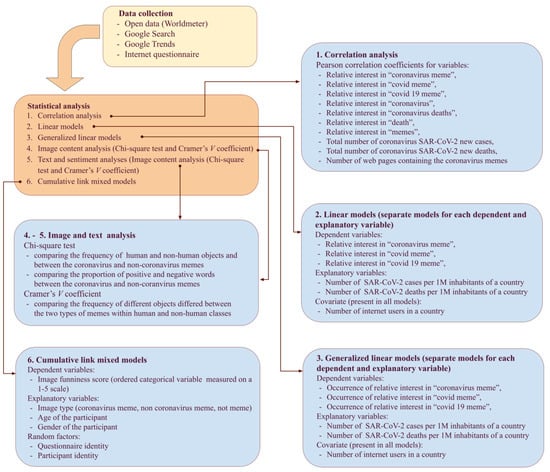What makes a successful Customer Relationship Management (CRM) system? How does one leverage this tool effectively? What constitutes the core elements of CRM? These compelling questions are integral in understanding the multifaceted concept of CRM, deemed essential in the contemporary business landscape.
Empirical data from Gartner reveals that around half of CRM projects fail, illustrating the prevalent problem faced by numerous enterprises. Harvard Business Review also disclosed a statistic that further elucidates the growing issue: an astounding $1.3 trillion was spent on digital transformation last year, with $900 billion deemed wasted on unsuccessful implementations. Recognizing these grave statistics, it’s apparent that a solution must involve clarifying and understanding the key components of CRM. This will not only enhance the success rates of CRM implementations, but also enable businesses to maximize their investment and realize their envisioned objectives.
In this article, you will learn the four indispensable elements of CRM. These pillars will provide a firm foundation not only for grasping the basic concepts, but also for executing the effective use of CRM in practice. It will help you to evaluate and refine your existing system or guide the implementation of a new CRM platform.
By enlightening readers about the customer strategy, organizational collaboration, CRM processes, and CRM information, the article will help to demystify the otherwise daunting task of successfully executing a CRM strategy. It will illustrate how each element can play a critical role in enhancing customer satisfaction and ensuring business success to provide you with a comprehensive guide for effective CRM.

Key Definitions of the four Elements of CRM
Customer Relationship Management (CRM) has four key elements. The first one is marketing, which involves identifying customer needs and driving revenue growth by creating brand awareness and attracting potential customers.
The second one is sales, which involves closing deals, nurturing leads, and making sure that customers are fully satisfied with their purchases.
The third one is customer service, which involves handling customer inquiries, resolving issues, and ensuring that customers are satisfied with products or services.
The fourth one is analytics, which involves using data to gain insights about customer preferences and behaviors, thereby improving business decisions and strategies.
Challenging the Norm: Revisiting the Core Elements of CRM
Understanding CRM Elements
Customer Relationship Management (CRM) is integral in running a successful business, allowing a seamless interaction between customers and businesses. CRM involves four primary elements that are instrumental in building and maintaining effective customer relations, namely, Operational, Collaborative, Analytical, and Strategic CRM.
Business enterprise applications
Microsoft 365 Apps for Enterprise
Enterprise Business apps generator
Operational CRM comprises the system for managing customer interactions across multiple channels, keeping track of customer details and automating various customer-centric operations such as marketing efforts, sales, and services. It forms the backbone of better business-to-customer relationships, helping companies to efficiently cater to customer services.
Deep Diving into CRM Categories
Collaborative CRM focuses on involving third party vendors or external organizations necessary to streamline the business to customer interaction process. It ensures that everyone, from backend service providers to distribution and delivery organizations, are kept informed in the loop for serving the customers better.
- Collaborative CRM serves to enhance the communication pipeline between businesses and customers, using various tools like social media, instant messaging platforms, and cloud-based solutions to improve the overall customer experience.
- Analytical CRM, as the name suggests, deals with the analysis of customer data to formulate personalized offers and services based on past behavior, spending habits, and more.
- This complex form of CRM aids businesses in identifying potential customer segments, predicting customer behavior, and gauging customer satisfaction levels to make informed decisions on product enhancements and promotional strategies.
Strategic CRM, the last type, leverages from all three, i.e., operational, collaborative, and analytical CRMs to formulate customer-centric strategies. Under strategic CRM, businesses use data analyzed from previous interactions, approach employed, and customer feedback to devise a customer-focused approach that increases the probability of business success.
The implementation of CRM not only boosts business productivity but also enhances customer satisfaction. By understanding customers better, companies can deliver personalized solutions that meet the customers’ unique needs, thus, increasing customer loyalty and ultimately, company profit.
Diving Deeper: Decoding the Essential Aspects of Successful CRM Strategy
Pondering the Core of CRM
Is it safe to say that any business without a well-implemented CRM strategy remains incomplete in today’s competitive environment? The strategic focus on customer relationship management (CRM) helps businesses in streamlining their processes, noticing potential challenges, and monitoring and improving the customer journey. Essential aspects of a successful CRM strategy include: communication, customer service, techniques for customer retention, and technology integration.
Communication is the backbone of CRM. The communication sector entails collating and organizing customer information that can help businesses tailor their strategies based on customer preference, which caters to personalized communication. Then comes customer service, which refers to how a business interacts with its customers beyond simple transactions. A business should have the ability to resolve customer complaints and inquiries promptly and effectively, which will result in enhancing customer retention strategies. Following this is techniques for customer retention, in which the company needs to continually work on its strategies to ensure loyal customers stick around. Lastly, technology integration plays a significant role in coordinating customer data between different departments, allowing for seamless access and sharing of information.
Unraveling the Predicament with CRM
However, implementing these components accurately may pose a problem, especially if a firm lacks a comprehensive understanding of CRM dynamics. For instance, without streamlined communication, it becomes nearly impossible to provide customers with effective and efficient service. A lack of understanding customers’ unique needs and preferences can result in failed retention strategies, reducing customer loyalty and potentially leading to a decrease in overall sales.
Moreover, if a business is not technologically equipped to handle customer data appropriately, it can lead to leaking sensitive customer information to the wrong hands, creating a significant breach in trust. Therefore, the major issue lies in the execution of CRM strategy, which, if not addressed promptly and adequately, can lead to declining customer loyalty, decreasing sales, and ultimately, failure of the business.
CRM Best Practices: Case Studies in Excellence
There are numerous examples of companies implementing CRM strategies successfully. Amazon has significantly improved their CRM by integrating technology. They use data analysis and artificial intelligence to personalize user experience, making recommendations based on past purchases.
Another example is Apple, which employs superior customer service. They focus on the customer experience and strive to resolve issues quickly and efficiently. This focus on customer satisfaction has earned them a loyal customer base. Furthermore, Starbucks’s customer retention techniques are noteworthy. They offer a rewards program and personalize offers for customers, enhancing their loyalty and fostering significant relationships.
These examples emphasize the importance of strategizing and operationalizing the CRM to uphold a sustainable business model. Understanding the customer’s needs, putting forth effective customer services, ensuring customer retention, and leveraging the right technology, then, become integral aspects of crafting an effective CRM strategy.
Unveiling the Secrets: Understanding the Transformative Power of CRM’s Four Key Elements
Thought-Provoking Considerations
Have you ever pondered why some businesses succeed brilliantly while others are left behind in the competitive market? The answer might be rooted in how organizations utilize CRM or Customer Relationship Management systems. CRMs are not only about technology; they encompass a broad set of practices and strategies aimed at managing interactions with clients and potential customers. At their core, four elements define CRM’s transformative potential: Customer-centricity, Relationship Management, Technology, and Business Process Management.
Firstly, Customer-centricity implies that companies put their customers’ needs and satisfaction at the forefront. This focus is pivotal in aligning business practices with customer expectations, leading to improved customer loyalty and increased revenues. In contrast, organizations that don’t adopt a customer-centric approach often fail to understand their customers’ needs and wants, leaving their clients feeling undervalued and fostering stagnant growth.
Unseen Challenges
In spite of its compelling potential, implementing a successful CRM can present numerous complications. One key challenge in unlocking CRM’s transformative power is the coherent integration of the four key elements. In many cases, companies overemphasize the technological aspect, overlooking the significance of aligning this with the other three aspects. But CRM is not merely a software; it is a comprehensive strategy which, to be effective, requires a synchronized approach. Furthermore, organizations often struggle with the shift towards a customer-centric model, which can demand a profound cultural change within the company. This transition can be challenging as it may necessitate rearrangements across various departments, affecting the overall workflow and, ultimately, the organization’s bottom line.
Successful Deployments
The illustration of successful CRM implementation lies in how companies like Amazon and Starbucks integrate the four elements of CRM to foster an enviable customer relationship. Amazon has virtually revolutionized the concept of customer-centricity by providing personalized shopping experiences based on individual customers’ browsing history and purchasing patterns. This approach has propelled them to become an e-commerce leader, setting new standards for customer service. Starbucks, on the other hand, integrates CRM into its business model by offering a rewards system that fosters long-term relationships with its patrons. The ‘Starbucks Rewards’ program uses the power of technology to collect customers’ data, tracking purchases, and in turn, delivering personalized offers. Customer engagement is also encouraged through the invitation to vote on potential new products, fostering a sense of being valued and heard.
In summary, CRM’s transformative power lies in the balanced integration of customer-centricity, relationship management, technology, and business process management, each element playing a key role in enhancing customer relationships and driving business growth. The success of giants like Amazon and Starbucks serves as a testament to the potential of CRM when implemented in a strategic and organized manner.
Conclusion
Have you ever contemplated how important it is to have a successful customer relationship management strategy in place for your business, and further, to understand its indispensable elements? It could be the strikingly distinctive factor in your company’s success or failure. The four key components, namely, communication, customer service, analysis, and technology, all work together to create an effective CRM system. By mastering these variables, not only would you manage to improve your customer interactions but also, fortify your brand’s reputation which in return, cultivates customer loyalty.
If you’ve found this content valuable and want to delve deeper into the strategies that make up a successful CRM, why not become a regular reader of our blog? By following us, you not only gain access to thought-provoking insights about CRM but also other crucial components of business strategy. From useful tips on how to retain your clients to analyzing the customer trends, you’ll find a goldmine of information here.
And while this entry wraps up our discussion on the all-important four elements of CRM, it’s only the tip of the iceberg as far as this subject goes. Stay connected to our blog to wait for new releases of content. There’s so much more to learn about establishing productive customer relationships, improving your customer service, effectually using your CRM technology, and smartly analyzing customer data. True wisdom lies in knowing that there’s always more to learn, and we are here to help you on this journey. So, wait with bated breath for our next dose of wisdom on your way.
F.A.Q.
1. What is CRM and why is it important?
The term CRM stands for Customer Relationship Management. It’s a significant aspect of any business as it helps to manage and improve relationships with customers, enhance customer service and ultimately drive sales growth.
2. What are the 4 elements of CRM?
The four elements of CRM are Customers, Relationships, Management and Information. All four elements are equally important and contribute in maintaining strong, profitable and long-term customer relationships.
3. How does the ‘Customer’ element influence CRM?
The ‘Customer’ in CRM refers to the people or organizations who purchase a company’s products or services. Understanding the customer’s needs, preferences, and behaviors are crucial for businesses to adapt their products, services, and interactions accordingly.
4. What is the role of ‘Relationships’ in CRM?
‘Relationships’ in CRM refers to the interactions and communication between the company and its customers. Building, strengthening, and maintaining effective relationships with customers is fundamental to CRM.
5. What is the part of ‘Management’ in the CRM process?
‘Management’ in CRM implies to creation and execution of strategies and practices that manage customer relationships. This includes sales management, marketing, customer service, and every interaction that impacts customer satisfaction and understanding.


